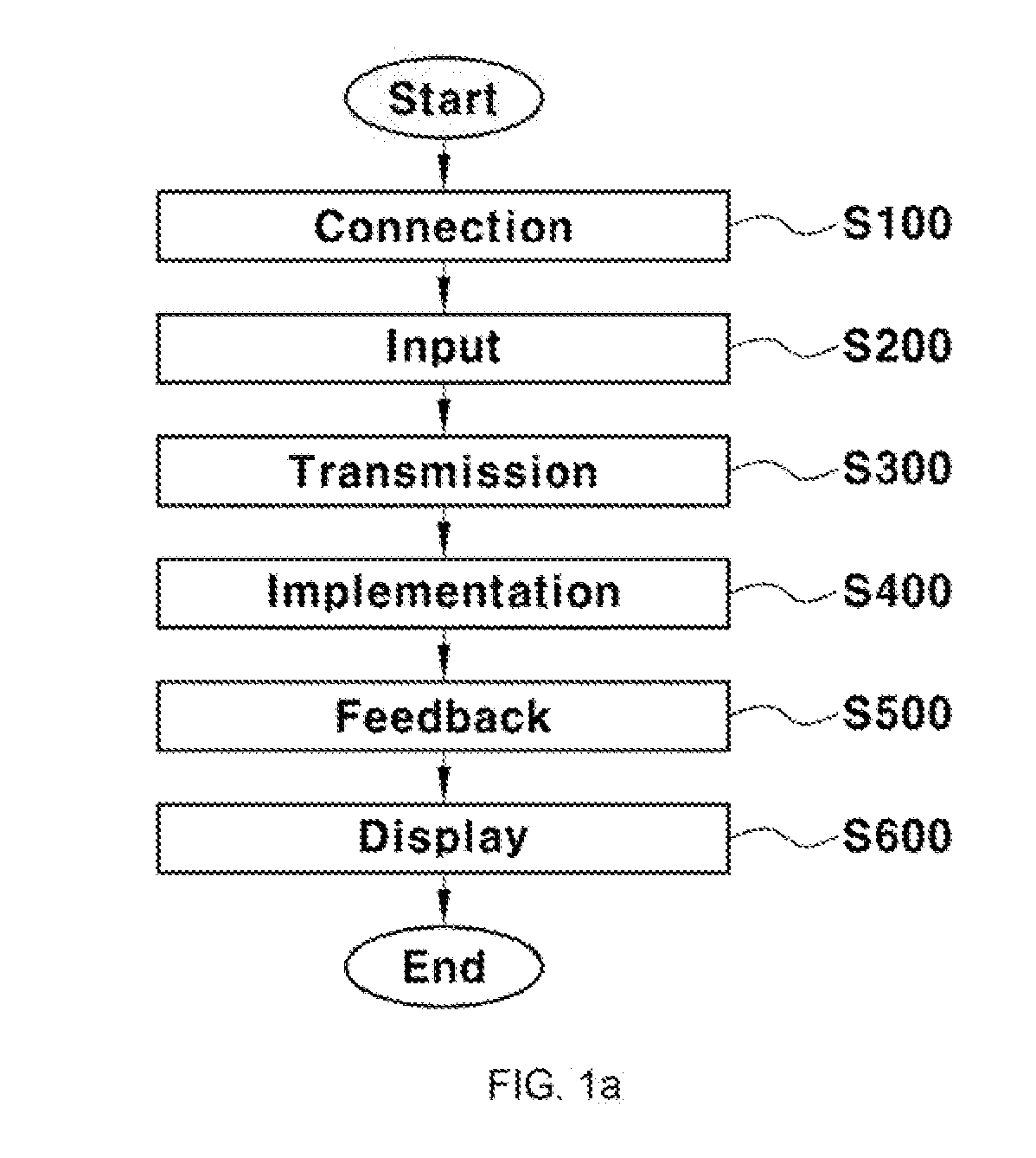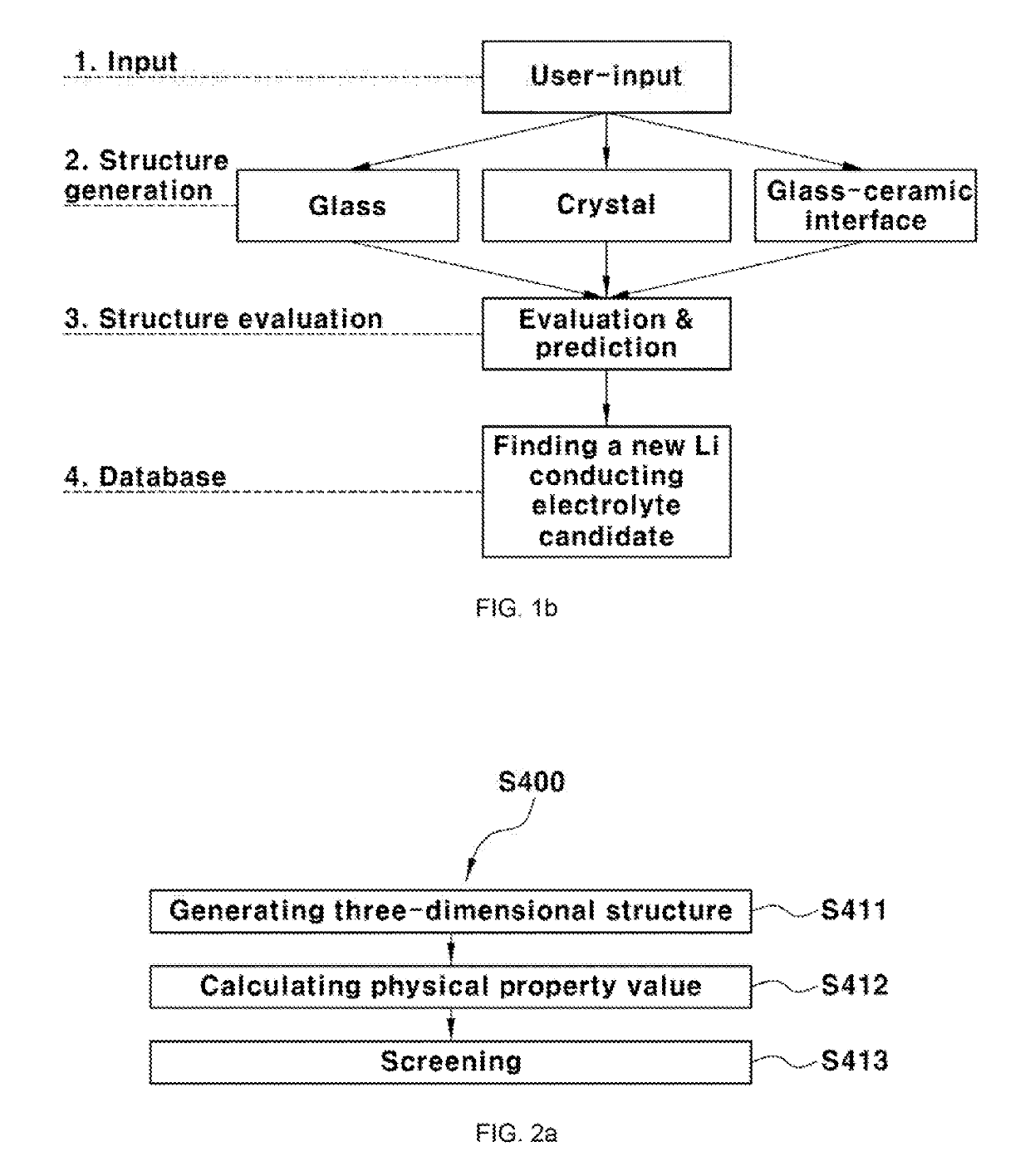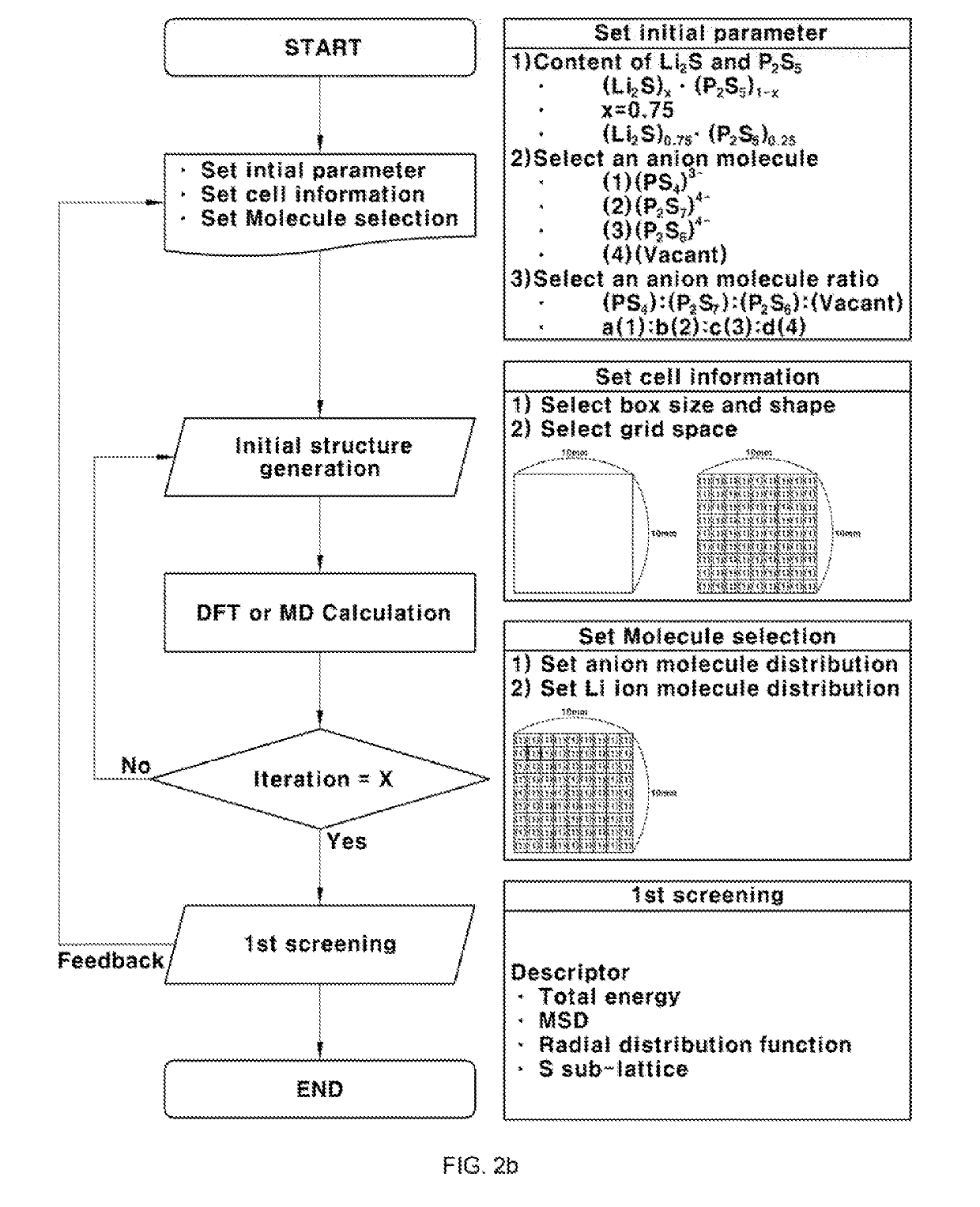Method for analyzing sulfide-based solid electrolyte using computer simulation and program for analyzing sulfide-based solid electrolyte using computer simulation
a solid electrolyte and computer simulation technology, applied in the direction of instruments, material electrochemical variables, chemical properties prediction, etc., can solve the problems of limited calculation cost efficiency, low efficiency of calculation, and the most difficult target for glassy structure and glass-ceramic combination structure calculation
- Summary
- Abstract
- Description
- Claims
- Application Information
AI Technical Summary
Benefits of technology
Problems solved by technology
Method used
Image
Examples
example 1
Method for Analyzing Glassy-Structure Sulfide-Based Solid Electrolyte
[0119]Setting Compositional Ratio
[0120]Parameter input includes three steps. Setting an initial parameter is a step of selecting a composition of a raw material powder. The compositional ratio of the raw material powder is represented by the following equation:
(Li2S)x·(P2S5)1−x
wherein x is a composition modifier. The composition modifier x that is experimentally generates a lithium ion high-conduction phase is 0.6 to 0.9. The glassy generation algorithm limited the range of the composition modifier x from 0.4 to 1.0. When the composition modifier was determined, a type of molecular anion clusters derived from the network former, i.e., PxSy was selected based on the determined composition. Anion clusters experimentally identified as network formers from glassy materials were (PS4)3−, (P2S6)4−, and (P2S7)4−. The network formers (PS4)3−, (P2S6) and (P2S7)4− are represented by (1), (2) and (3) later, respectively. An...
PUM
 Login to View More
Login to View More Abstract
Description
Claims
Application Information
 Login to View More
Login to View More - R&D Engineer
- R&D Manager
- IP Professional
- Industry Leading Data Capabilities
- Powerful AI technology
- Patent DNA Extraction
Browse by: Latest US Patents, China's latest patents, Technical Efficacy Thesaurus, Application Domain, Technology Topic, Popular Technical Reports.
© 2024 PatSnap. All rights reserved.Legal|Privacy policy|Modern Slavery Act Transparency Statement|Sitemap|About US| Contact US: help@patsnap.com










